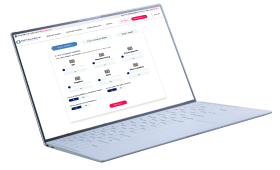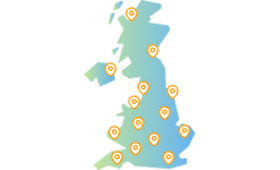
Understand your company's position and learn more about the options available
Require Immediate Support? Free Director Helpline: 0800 644 6080
Free Director Helpline: 0800 644 6080
Updated:
When a company becomes insolvent and enters into a formal liquidation procedure, the order in which creditors are paid from the realisation of company assets is set out in the Insolvency Act 1986.
Creditors will be grouped into 'classes', and each class or group must be paid in full before the liquidator moves on to the next. There are essentially three main classes - secured, unsecured, and preferential creditors – but these can be broken down further as we detail below.
Free 60 Second Test
For Ltd Company Directors
What are you looking to do?
Choose below:
Once the costs of placing the company into liquidation have been covered, the first class of creditor to be paid are secured creditors holding a fixed charge over some or all of the company's property and other assets. At the bottom of the ranking lie unsecured creditors, who unfortunately, rarely fare well in these situations in terms of repayment.
Other factors also influence how much is received by each creditor class, including the cost of the liquidation process, the value of assets held by the insolvent company, and the ease with which these assets can be identified and liquidated.

1. Secured creditors with a fixed charge
Secured creditors are generally banks and asset-based lenders with security in the form of a fixed charge mortgage on business premises, land, or a specific piece of machinery. Secured creditors could also include invoice factoring finance providers holding security over a company’s sales ledger. When a company goes into liquidation, the secured fixed charge creditor is able to recover their money through the sale of the asset over which they are holding the security charge.
2. Preferential creditors
Preferential creditors include employees who are owed arrears of wages, holiday pay, and outstanding pension contributions.
3. Secondary preferential creditors
HMRC hold secondary preferential creditor status for some tax debts including VAT, PAYE, employee NICS, and Construction Industry Scheme deductions. HMRC's secondary preferential claims are paid only after employees with preferential claims have been paid.
“Shaun really helped me for quick legal advice in a stressful situation where I needed advice QUICK. Called me back within 30 seconds and gave me the advice I needed. Thank you”
Sam
4. Secured floating charge creditors and the ‘prescribed part’
Floating charges are those held over asset classes, such as fixtures and fittings, stock, and raw materials. These assets are liable to change as stock is sold and materials are bought; this differs from a fixed charge which is held on a particular item which does not change such as a piece of land or property.
The 'prescribed part' is an amount set aside from the sale of assets with a floating charge which is then used to repay unsecured creditors. The prescribed part was introduced to boost the chance of unsecured creditors receiving a return from the liquidation. The prescribed part is calculated as 50% of the first £10,000 of floating charge asset realisations, and 20% of any between £10,000 and £800,000. This only applies for floating charges taken out after 15th September 2003.
5. Unsecured creditors
The unsecured creditor group consists of those who aren’t classed as secured or preferential creditors, and include trade suppliers, contractors, some employment-related payments, some HMRC debts, unsecured debt providers, and customers.
6. Connected unsecured creditors
Also known as ‘associate’ creditors, connected unsecured creditors can include spouses and other members of a director’s family, or perhaps a member of staff who has loaned money to the company on an unsecured basis. Connected unsecured creditors will receive a dividend only once all other unsecured creditors have been fully repaid.
Mounting creditor pressure?
If your creditors are growing increasingly impatient, it is time to take action. Ignoring the situation is only likely to make it worse. Take the first step today by contacting Real Business Rescue for immediate help and advice.
The team are available now - 0800 644 6080
Get a Quote Find Your Nearest Office
7. Shareholders
There will only be sufficient funds to pay shareholders if it is a solvent liquidation known as a Members' Voluntary Liquidation (MVL). For insolvent liquidations, all available money will have already been distributed to other creditors by this point.
When a company enters liquidation, whether it’s a voluntary or compulsory process, all creditors have certain rights. One of those rights is to submit a claim for any money they’re owed by the company being liquidated (the debtor).
However, this process is a two-way street. The company being liquidated can also make claims against its creditors for money it is owed. And, if a claim is proven, the money it’s owed can be used to offset the debt to its creditor. This process is known as set-off.
When the right of set-off arises, it can effectively cancel out part or all of a creditor’s claim.
For example, if business A enters liquidation owing £50,000 to creditor business B, but business B also owes £20,000 to business A, the balance owing to business B on liquidation is £30,000.
Whether business B receives the £30,000 it’s owed in part or in full depends on several factors, such as whether it’s a secured or unsecured creditor and whether it has a fixed charge on a company asset.
If there have been mutual dealings between a company and a creditor before that company goes into liquidation, the right of set-off applies. The amount owing from the insolvent company to its creditor and vice versa must be taken into account and the amounts must be set-off against each other.
For more information on the company liquidation process, call one of our expert team. We offer a free same-day meeting, We have an extensive network of offices across the UK offering confidential director support across the UK.
Still unsure whether liquidation is right for your company? Don't worry, the experts at Real Business Rescue are here to help. Our licensed insolvency practitioners will take the time to understand the problems your company is facing before recommending the best course of action going forward based on your own unique circumstances.

Complete the below to get in touch
For Ltd Company Directors
What are you looking to do?
Choose below:
We provide free confidential advice with absolutely no obligation.
Our expert and non-judgemental team are ready to assist directors and stakeholders today.

Understand your company's position and learn more about the options available

Find your nearest office - we have more than 100 across the UK. Remote Video Meetings are also available.

Free, confidential, and trusted advice for company directors across the UK.